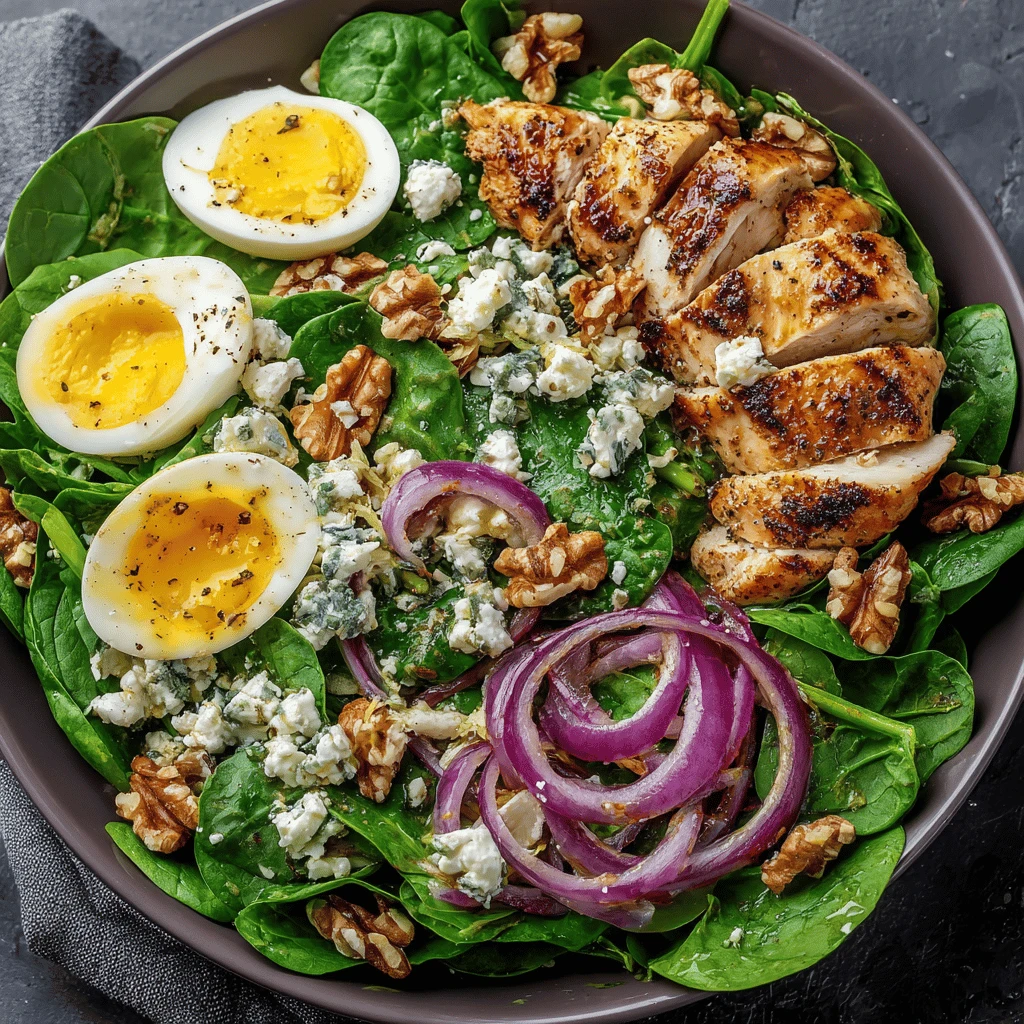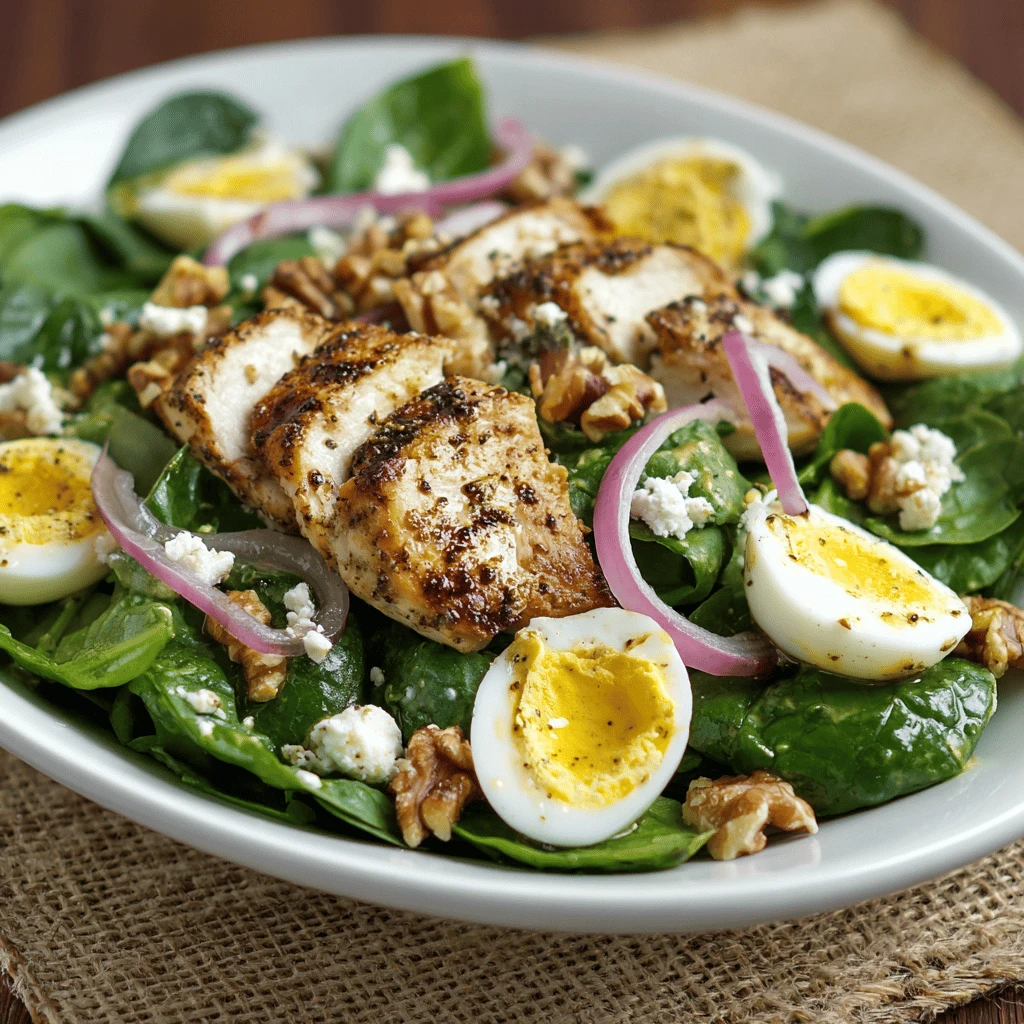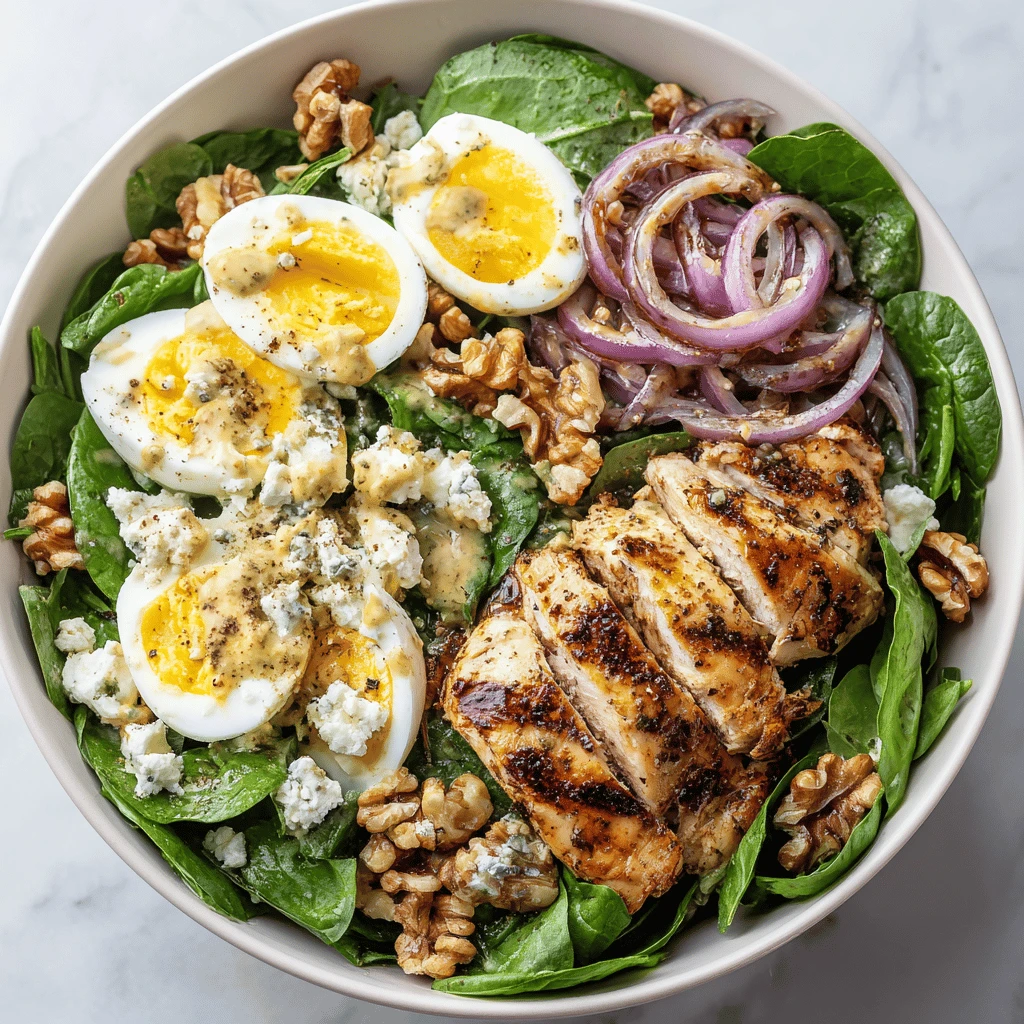High Protein Low Carb Spinach Salad: Fuel Your Body the Healthy Way
Spinach salads are a fantastic way to incorporate leafy greens into your diet, but sometimes they lack the staying power needed to keep you satisfied. This high protein, low carb spinach salad recipe addresses that concern, offering a delicious and nutritious meal option perfect for lunch, dinner, or a satisfying side dish. We’ll explore the benefits of this salad, provide a versatile recipe, discuss ingredient substitutions, and offer tips for meal prepping.
The Powerhouse Combination: Spinach, Protein, and Low Carbs
Spinach is a nutritional superstar, packed with vitamins (A, C, and K), minerals (iron, calcium, and potassium), and antioxidants. Its mild flavor makes it a versatile base for various ingredients.
- Why Protein Matters: Protein is essential for building and repairing tissues, supporting muscle growth, and promoting satiety. Adding protein to your spinach salad transforms it from a light side dish into a complete meal, helping you feel fuller for longer and preventing cravings.
- Low Carb Benefits: Limiting carbohydrates can aid in weight management, improve blood sugar control, and boost energy levels. By focusing on protein and healthy fats, this spinach salad provides sustained energy without the blood sugar spikes associated with high-carb meals.
- Synergy in Action: The combination of spinach, protein, and low carbs creates a synergistic effect, maximizing the health benefits of each component. This salad provides a nutrient-dense and satisfying meal option suitable for various dietary needs.
Recipe: High Protein Low Carb Spinach Salad
This recipe is a starting point; feel free to customize it with your favorite ingredients.
Ingredients:
- 5 ounces baby spinach, washed and dried
- 4 ounces grilled chicken breast, sliced (or tofu, salmon, or cooked shrimp for alternatives)
- 2 hard-boiled eggs, sliced
- 1/4 cup crumbled feta cheese (or goat cheese, or skip for dairy-free)
- 1/4 cup chopped walnuts or almonds (or pumpkin seeds for a nut-free option)
- 1/4 cup red onion, thinly sliced
- 2 tablespoons olive oil
- 1 tablespoon lemon juice or apple cider vinegar
- 1 teaspoon Dijon mustard
- Salt and pepper to taste
Instructions:
1. In a large bowl, combine the spinach, sliced chicken, hard-boiled eggs, feta cheese, walnuts, and red onion.
2. In a small bowl, whisk together the olive oil, lemon juice, Dijon mustard, salt, and pepper.
3. Pour the dressing over the salad and toss gently to combine.
4. Serve immediately or chill for later.
Variations and Adaptations:
- Vegetarian/Vegan: Substitute the chicken with grilled tofu, tempeh, or lentils. Omit the feta cheese or use a vegan cheese alternative.
- Mediterranean Style: Add sun-dried tomatoes, Kalamata olives, and cucumber. Use a lemon-herb vinaigrette.
- Asian Inspired: Add edamame, shredded carrots, and sesame seeds. Use a sesame ginger dressing.
- Spice it Up: Add a pinch of red pepper flakes to the dressing or include a few slices of jalapeño to the salad.
Ingredient Spotlight: Maximizing Nutrition and Flavor
Choosing the right ingredients can elevate your spinach salad from good to great.
-
- Protein Power: Chicken breast is a lean and versatile protein source. Other excellent options include:
Salmon: Rich in omega-3 fatty acids and protein.
Tofu: A plant-based protein source that absorbs flavors well.
Shrimp: Quick to cook and adds a delicious seafood flavor.
Hard-Boiled Eggs: A classic and affordable protein option.
-
- Healthy Fats: Healthy fats contribute to satiety and provide essential nutrients.
Olive Oil: A heart-healthy fat with a distinct flavor.
Nuts and Seeds: Add crunch and nutrients like vitamin E and magnesium.
Avocado: Creamy and rich in healthy fats and fiber.
-
- Flavor Boosters: These ingredients add depth and complexity to your salad:
Feta Cheese: Tangy and salty, providing a burst of flavor.
Red Onion: Adds a sharp and slightly sweet flavor.
Sun-Dried Tomatoes: Intense flavor and chewy texture.
Kalamata Olives: Briny and savory.
Dressing it Right: Low Carb Options
The dressing can make or break a salad. Avoid sugary dressings and opt for low-carb alternatives.
- Basic Vinaigrette: A simple combination of olive oil, vinegar (such as apple cider vinegar or balsamic vinegar), Dijon mustard, and seasonings.
- Lemon Herb Dressing: Combine olive oil, lemon juice, fresh herbs (such as parsley, dill, or oregano), garlic, and seasonings.
- Creamy Avocado Dressing: Blend avocado, olive oil, lemon juice, garlic, and water for a creamy and healthy dressing.
- Yogurt-Based Dressing: Mix plain Greek yogurt, lemon juice, Dijon mustard, herbs, and seasonings for a tangy and protein-packed dressing.
Tips for Low Carb Dressing:
- Use a sugar substitute, such as stevia or erythritol, if needed.
- Avoid pre-made dressings that often contain added sugars and unhealthy oils.
- Make your own dressings to control the ingredients and nutritional value.
Meal Prep and Storage: Planning for Success
Preparing your spinach salad in advance can save time and ensure you have a healthy meal option ready to go.
- Ingredient Preparation: Wash and dry the spinach, cook the protein, hard-boil the eggs, and chop the vegetables ahead of time. Store each ingredient separately in airtight containers in the refrigerator.
- Dressing Storage: Prepare the dressing and store it in a separate container in the refrigerator.
- Assembly: Assemble the salad just before serving to prevent the spinach from wilting.
- Storage Tips: If you need to store the assembled salad, keep the dressing separate and add it just before serving. This will help prevent the spinach from becoming soggy. The salad can be stored in the refrigerator for up to 24 hours.
Make-Ahead Ideas:
- Prepare individual salad containers with the spinach, protein, and toppings. Store the dressing separately and add it when you’re ready to eat.
- Cook a large batch of chicken or tofu on the weekend and use it in your salads throughout the week.
- Hard-boil a dozen eggs at once and store them in the refrigerator for a quick and easy protein source.
FAQ: Your Questions Answered
Q: Can I use frozen spinach in this salad?
A: While fresh spinach is preferable for its texture, you can use frozen spinach in a pinch. Thaw it completely and squeeze out any excess water before adding it to the salad. Keep in mind that the texture will be softer than fresh spinach.
Q: What are good alternatives to spinach?
A: If you’re not a fan of spinach, you can use other leafy greens such as kale, romaine lettuce, or arugula. Each has a slightly different flavor and texture, so experiment to find your favorite.
Q: How can I make this salad more filling?
A: To make the salad more filling, add more protein and healthy fats. Consider adding avocado, nuts, seeds, or a larger portion of chicken, tofu, or fish. You can also add a small amount of complex carbohydrates, such as quinoa or sweet potato, if you’re not strictly following a low-carb diet.
Q: Is this salad suitable for people with dietary restrictions?
A: This salad can be easily adapted to suit various dietary restrictions. For vegetarian or vegan diets, substitute the chicken with tofu, tempeh, or lentils. Omit the cheese or use a vegan alternative for dairy-free diets. For nut allergies, use seeds instead of nuts. Always check ingredient labels to ensure they meet your specific dietary needs.
Q: How long does this salad last in the refrigerator?
A: When stored properly, this salad can last in the refrigerator for up to 24 hours. Keep the dressing separate and add it just before serving to prevent the spinach from becoming soggy.




